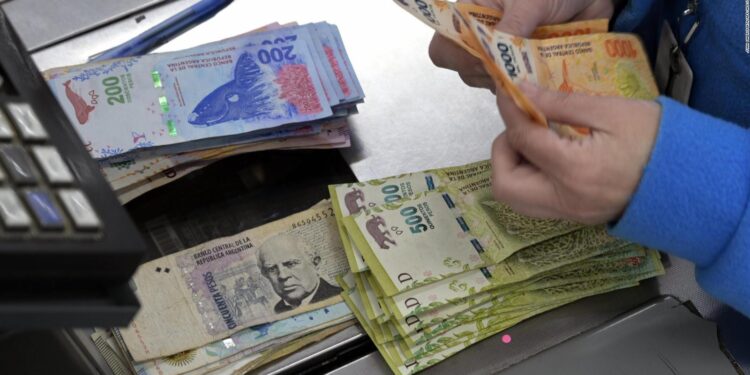RIO DE JANEIRO, BRAZIL – Inflation in Argentina ceded some ground last May but continues at very high levels, with a worrying trajectory in the case of food that has led the Government to adopt certain measures to try to contain the escalation.
The National Institute of Statistics and Census reported Wednesday that consumer prices in Argentina rose 3.3% in May compared to last April.

The figure for the fifth month of the year reveals a deceleration with respect to March and April, when inflation was 4.8% and 4.1%, respectively.
Meanwhile, consumer prices advanced 48.8% in May in interannual terms and accumulated 21.5% in the first five months of the year.
According to the official report, among the increases recorded in the fifth month of the year, transportation services (6%) and health (4.8%) stood out.
FOOD PRICES SKYROCKETING
Despite the slight respite in the general index, the trajectory of prices in the food and beverage segment continues to be worrisome due to its impact on the cost of the basic basket and on the poverty level, which is growing in Argentina.
According to data released on Wednesday, food and beverage prices rose 3.1% in May compared to April, 49.9% in year-on-year terms, and accumulated a jump of 22.4% in the first five months of the year.
According to the official report, “the rise in the food and non-alcoholic beverages division had the highest incidence in most of the regions” of the country.
In a very complex context for the Argentine economy -where high inflation is added to a scenario of recession and employment and income problems aggravated by the pandemic-, the Government of Alberto Fernández has adopted some measures to contain food prices.
In May, the Executive suspended beef exports to contain their values in the domestic market, which, according to official data released this Wednesday, grew 72.9% in interannual terms and accumulated an increase of 27.6% so far this year.
Meanwhile, last week the Government launched, using an agreement with 24 large companies, a basket of 70 mass consumption products, mostly food and beverages, sold at frozen prices until the end of the year in local stores.
OFFICIAL TARGET
After registering inflation of 36.1% in 2019, the Government projected for 2021 a rise of 29%, which, given the behavior of prices so far this year, is shaping up to be a difficult target to meet.
In fact, private economists consulted monthly by the Central Bank for its expectations report already project average inflation of 48.3% for this year. However, there are higher forecasts of up to 60%.
The Government, in any case, insists on projecting a downward curve in the growth rate of prices for the coming months.
In a meeting organized in Buenos Aires by the Argentine chapter of the Inter-American Council of Commerce and Production, the Argentine Minister of Economy, Martín Guzmán, said on Wednesday that “the conditions are in place so that month by month”, even with “some seasonal fluctuations”, “inflation will go down”.
“The inflation figure for May is lower than that of April, but we must continue because we are still at levels that are above what we consider should be aligned with what is macroeconomically feasible,” he noted.
“But today we have the conditions for this process of seeing a reduction in inflation to continue”, insisted Guzmán before a group of business leaders.
For the minister, inflation is a “multi-causal” phenomenon that requires addressing the structural problems of the economy with an “integral macroeconomic approach”, including exchange, fiscal and monetary policy, and coordination with key actors, such as businessmen and unions.

